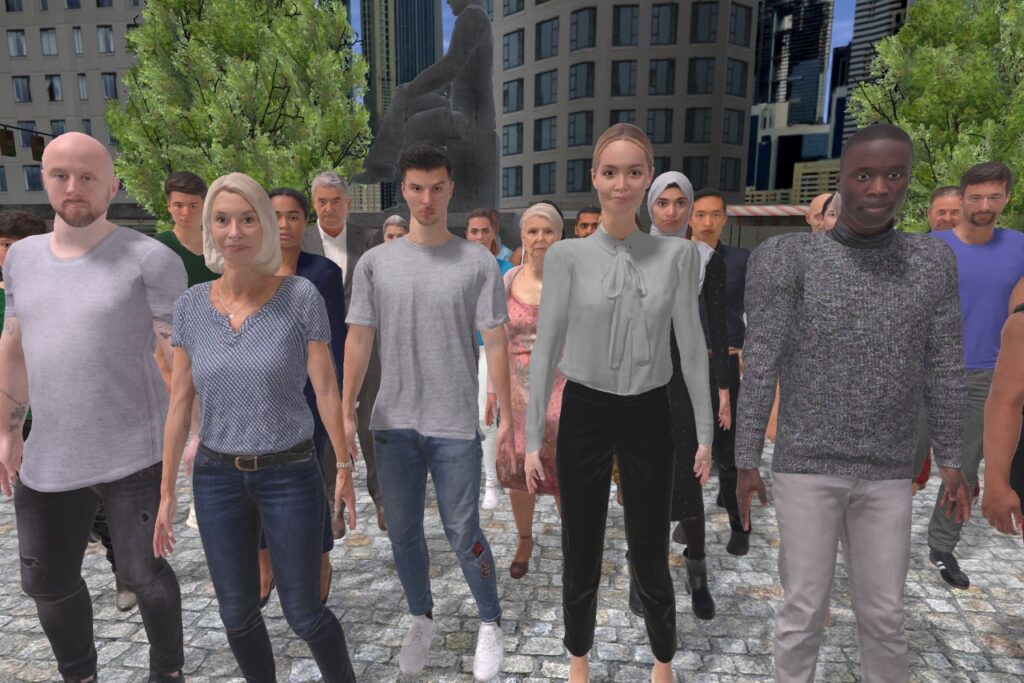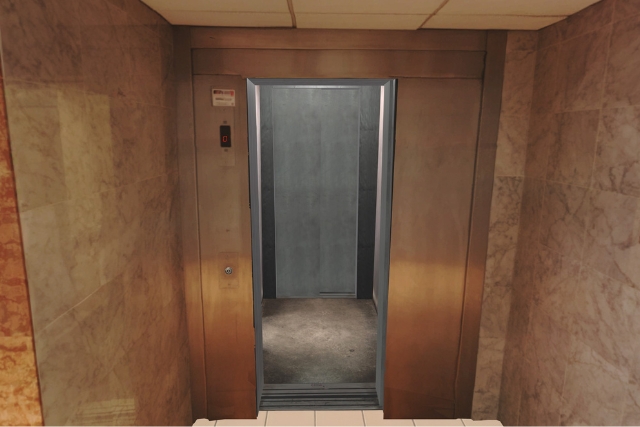Why such efficacy ?
1. Immersion
The user will be immersed in virtual environments designed to recreate situations that can trigger agoraphobia.
2. Cognitive restructuring
The user will unlearn negative reactions, such as catastrophic thoughts (“I’m trapped”), and rebuild positive thought patterns (“I am safe”).
3. Repetition
Through repeated exposures, these patterns will become quickly and permanently ingrained in your mental functioning.
4. Progressiveness
The gradual increase in the difficulty of the environments will allow the user to progressively desensitize to the anxiety experienced and regain confidence in their abilities.
5. Personalization
With Artificial Intelligence, they will be supported and encouraged in a personalized way throughout the exposures.
Receive the C2Care method for free, combining Artificial Intelligence and Virtual Reality !
The AI revolution !
The different situations of agoraphobia !
Open spaces

Open spaces
Agoraphobic individuals often experience intense anxiety in open spaces such as parks, public squares, or areas near bodies of water. These locations are perceived as less secure and harder to control, heightening feelings of vulnerability. Additionally, open spaces may involve more social interactions, leading to significant anxiety.
Through controlled exposure, users can gradually confront situations they previously avoided, helping them prepare to overcome these challenges in real-life conditions.
Enclosed spaces
Buildings can be anxiety-inducing for agoraphobic individuals due to a variety of triggers: walkways, stairs, heights, or elevators. These scenarios often provoke panic attacks as individuals fear feeling trapped or unable to escape.
With virtual reality, users can progressively expose themselves to these environments, avoiding the risk of triggering a panic attack while working through the anxiety they evoke.
Enclosed spaces

Public transportation

Public transportation
Public transportation, commonplace for many, can be highly anxiety-inducing for individuals with agoraphobia. Modes of transport such as subways, trains, buses, and airplanes are among the most stressful. Unexpected events, such as delays or the behavior of fellow passengers, can exacerbate this anxiety and lead to avoidance behaviors.
By engaging in repeated exposure within safe environments, users can gradually overcome their fears and regain the confidence to travel again.
Crowds and public spaces
Agoraphobic individuals may experience heightened anxiety in crowded places (e.g., moving crowds) or situations requiring interaction with numerous people. Everyday public spaces such as supermarkets, queues, cinemas, hospitals, or airports can also provoke significant distress.
With the help of virtual reality, users can rebuild their confidence and their ability to overcome obstacles related to their phobia.
Crowds and public spaces

Lives changed thanks to our method.
Feel free to customize your exhibitions for a fully immersive experience !
Each environment can be personalized by precisely choosing the situation to be exposed to :
Crowd density in public spaces : Whether in public transport (subway, airplane, bus) or a supermarket, you can adjust the crowd density and the behavior of individuals in the environment to provide gradual exposure.
Simulated transport breakdowns : In transportation scenarios, you can program the occurrence of a breakdown to intensify the feeling of being unable to escape, enabling deep work on agoraphobia.
Elevator wall transparency : Being able to see the outside from within an elevator can be reassuring. Users can gradually adjust the opacity of the elevator walls to build comfort and confidence.
They testify to the effectiveness of C2Care !

Clara - User

Jordan Fannis - Psychologist
I saw in the field what it brings to my patients, satisfaction, and then with a little bit of gamification, we enjoy going to work. It creates a kind of connection between my patients and me.

Sophie - User
My agoraphobia prevented me from living normally, getting out of my house had become impossible. Thanks to the C2Care virtual reality method, I was able to work on my fears step by step, safely. Today, I am gradually returning to a normal life and true freedom.

Dr Redwan - Psychiatrist
The advantage is that you can precisely control the virtual environment, adjust the stimuli, adapt to the needs of the patient. There is the notion of safety that is very important, which can help them to take a step forward because they feel safer to face their fears.
Do you need further information or have any specific questions ?
Our environments in image











